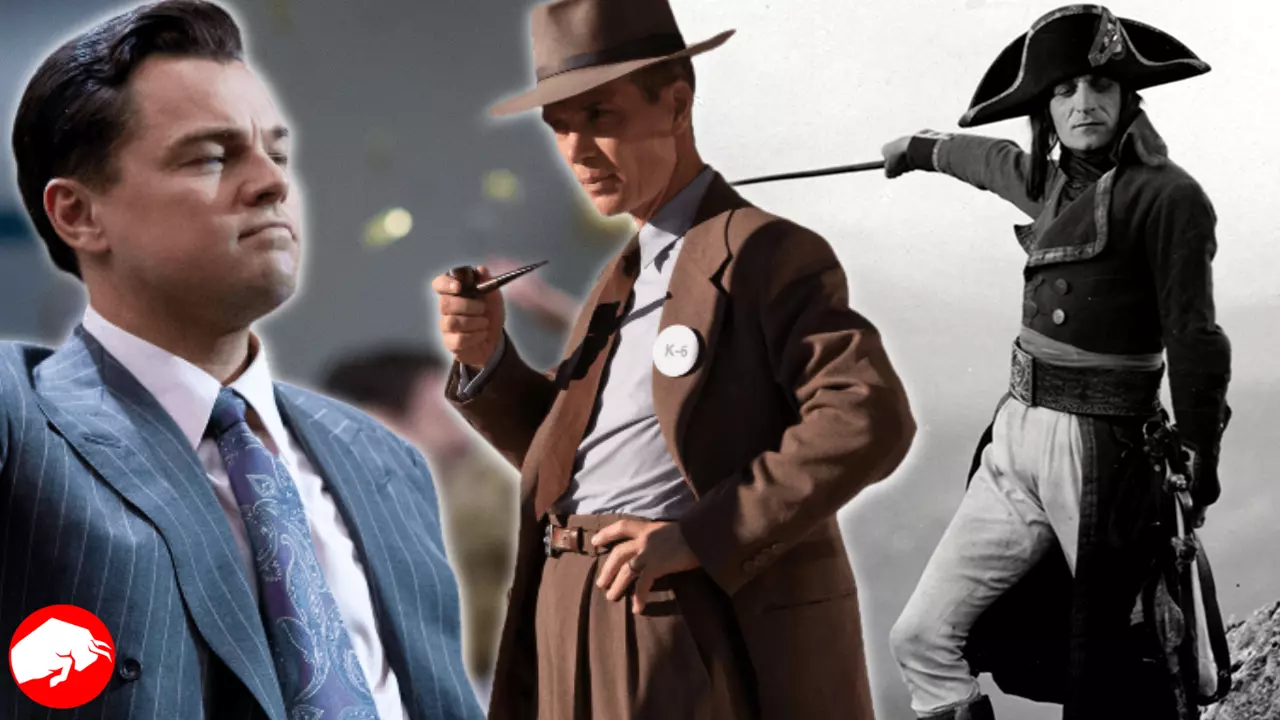When you stop and think about it, the task of capturing the entirety of a person’s life within the limited time frame of a single film can feel quite daunting. It’s almost like trying to catch the vast, unending expanse of the ocean in a tiny, small-mouthed bottle.
The essence of a person, the intricate details of their experiences, and the pivotal moments that shape their lives can’t be compressed or condensed easily. These are things that develop and change over years, influenced by a myriad of factors that range from personal choices to societal pressures.
Yet, filmmakers, with their unique blend of artistry, dedication, and storytelling prowess, continue to rise to this challenge. They’ve gifted audiences with some of the most engaging, immersive, and emotionally resonant tales that span entire lifetimes.
Biographical films, or biopics as they are more commonly known, are a particularly fascinating genre in the world of cinema. They stand apart not just because of the stories they tell, but also because of the sheer audacity and courage of the filmmakers who choose to embark on such complex and ambitious journeys. The task of adapting a real person’s life for the big screen is a monumental one, fraught with unique challenges and responsibilities.
It’s about striking a balance between authenticity and creativity, between fact and fiction, between the person who lived the life and the actor who portrays them on screen. And yet, despite these challenges, filmmakers have been able to create some of the most captivating, moving, and memorable biographical films.
Some of the most compelling biopics have chosen to break away from the typical movie length of around two hours. Instead, these films stretch over a longer duration, sometimes even extending to three or more hours. This unconventional choice of a longer running time allows filmmakers to delve deeper into the protagonist’s life, providing audiences with a more comprehensive, detailed, and holistic perspective.
Instead of rushing through key moments or skipping over crucial aspects of the person’s life, these extended biopics take their time to explore, examine, and express. They give audiences a chance to really get to know the protagonist, to understand their motivations, to experience their struggles, and to celebrate their successes.
Such films, however, aren’t just about length or detail. They’re about taking audiences on a journey that spans years, sometimes even decades, and making them feel like they’ve lived through those years with the protagonist. They’re about creating a connection between the audience and the protagonist, making the viewers feel like they’re part of the story and the life depicted on screen.
This connection, this feeling of shared experience, makes biopics such a powerful and impactful genre in cinema.
10. The Wolf of Wall Street (2013) – 3 hours
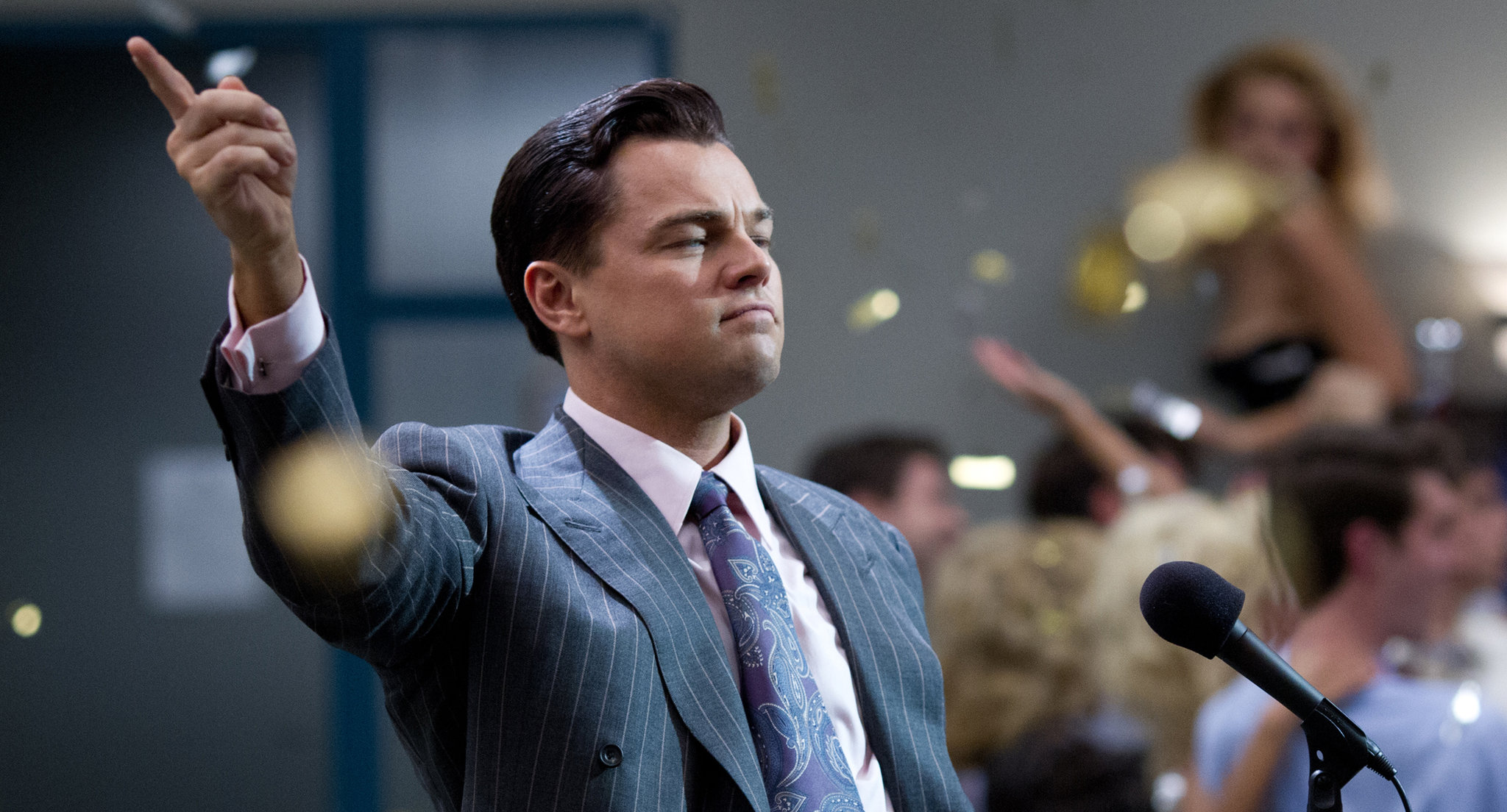
Directed by the illustrious Martin Scorsese, a filmmaker known for his vibrant storytelling and keen eye for character development, the narrative of this film plunges headfirst into the adrenaline-fueled life of Jordan Belfort, a stockbroker who made headlines during the late 20th century. Scorsese takes us on a wild ride, filled with fast-paced Wall Street trading, over-the-top parties, and a lifestyle that could only be described as extravagant to the extreme.
This depiction of Belfort’s life is nothing short of riotous. It’s a cinematic journey that pulls back the curtain on a world brimming with opulence and excess. From luxurious mansions and flashy cars to high-stakes business deals and outrageous office antics, every scene is imbued with a sense of grandeur and decadence that’s both thrilling and shocking to behold.
The film doesn’t shy away from showcasing the less than savory aspects of Belfort’s world, either. It boldly portrays the rampant immorality that underpins much of his actions, providing audiences with a no-holds-barred look into a life dominated by greed and hedonism.
But this film is far more than just a sensationalist portrayal of a wealthy stockbroker’s excesses. Beneath the glittering surface of extravagance and indulgence lies a much deeper, more nuanced story. It’s a narrative that explores themes of ambition, downfall, and human vulnerabilities, painting a complex portrait of a man who let his aspirations consume him.
At its core, it’s a story about ambition. Belfort’s relentless drive to succeed, to rise above his humble beginnings, and to make a name for himself in the ruthless world of Wall Street forms the backbone of the narrative. His ambition is palpable, driving every decision he makes, every risk he takes. It’s this ambition that catapults him to dizzying heights of success, but it’s also this ambition that blinds him to the potential consequences of his actions.
As the story unfolds, we see the gradual downfall of this once successful stockbroker. The higher Belfort climbs, the harder he falls. His reckless actions and unethical business practices eventually catch up with him, leading to his inevitable downfall. It’s a powerful portrayal of the risks of unchecked ambition and the destructive consequences it can have not only on the individual but also on those around them.
But what truly sets this film apart is its exploration of human vulnerabilities. Despite his outward bravado and overconfidence, Belfort is a man riddled with insecurities and fears. He’s haunted by the prospect of failure, driven by a desperate need to prove himself. It’s these vulnerabilities that make him relatable, that make his story resonate with audiences. In the midst of all the glitz, glamor, and scandal, it’s these glimpses of Belfort’s humanity that provide the emotional core of the film.
9. Oppenheimer (2023) – 3 hours
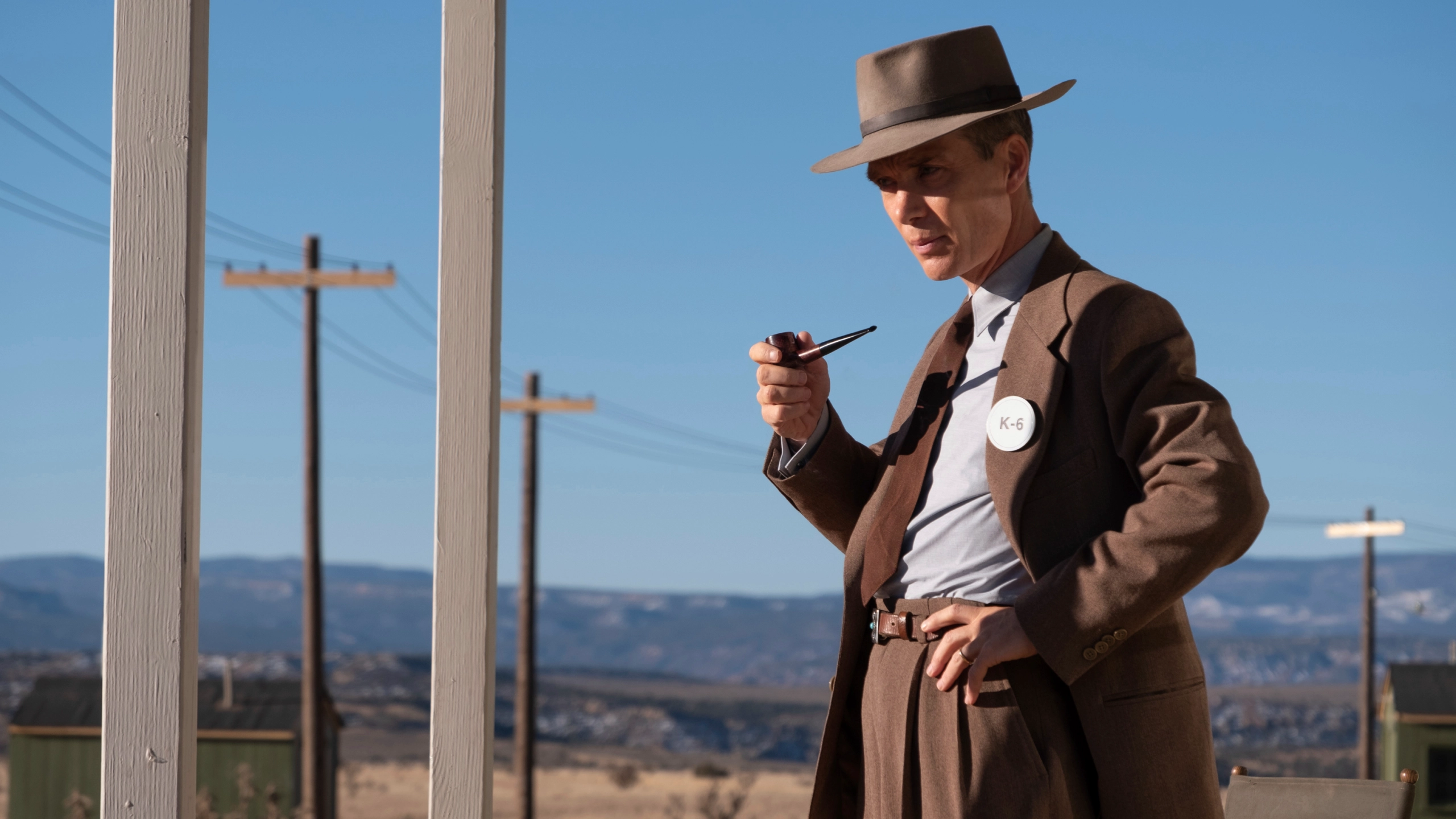
In his latest masterpiece, the highly acclaimed director Christopher Nolan turns his talented hand to the historical world, offering viewers a cinematic portrayal of the life of J. Robert Oppenheimer. A name that’s etched in history, Oppenheimer is often referred to as the ‘father of the atomic bomb.’ Nolan’s depiction of Oppenheimer’s life and the crucial role he played in the creation of the atomic bomb is a captivating journey that takes viewers back in time to one of the most pivotal periods in world history.
Every scene, every line of dialogue, and every character interaction has been carefully crafted to not just tell a story, but to transport audiences into a world that was fraught with tension, intrigue, and scientific discovery.
This movie is more than just a cinematic retelling of historical events. It’s a rich, multi-layered experience that delves deep into the psyche of one of the 20th century’s most influential figures. Through his expert storytelling and direction, Nolan manages to shed light on the many aspects of Oppenheimer’s life, from his groundbreaking scientific achievements to the personal and moral struggles he grappled with.
He paints a vivid picture of a man who was at once a brilliant scientist and a deeply conflicted individual, forever marked by the devastating weapon he helped create.
What makes this film truly gripping is the way Nolan balances the grand scale of the historical events with the deeply personal journey of Oppenheimer. It’s a careful tightrope walk between the macro and the micro, the global and the personal.
On one hand, we see the monumental impact of the atomic bomb, the profound changes it brought about in the world, and the far-reaching implications it had for global politics and warfare. On the other hand, we get an intimate look into Oppenheimer’s life, seeing how the weight of his work impacted his relationships, his mental health, and his personal sense of morality.
From start to finish, every second of this film is worth watching. It grabs your attention right from the opening scene, holding you in its grip as the story unfolds. Every shot, every piece of dialogue, every actor’s performance has been meticulously crafted to create an immersive and engaging viewing experience.
This isn’t just a film you watch – it’s a film you experience. You’re not just a passive viewer, but an active participant, drawn into the world of Oppenheimer, experiencing his triumphs, his failures, his joys, and his regrets alongside him.
Christopher Nolan’s depiction of J. Robert Oppenheimer’s life is a masterclass in filmmaking. It’s a movie that expertly weaves together history and character development, creating a cinematic tapestry that’s both intellectually stimulating and emotionally resonant. It doesn’t just tell you a story – it makes you feel it, live it, and remember it. In short, it’s a cinematic experience so gripping that every second is absolutely worth watching, every moment a testament to the power of storytelling, and every scene a reminder of the immense talent of its director.
8. Gandhi (1982) – 3 hours 11 minutes
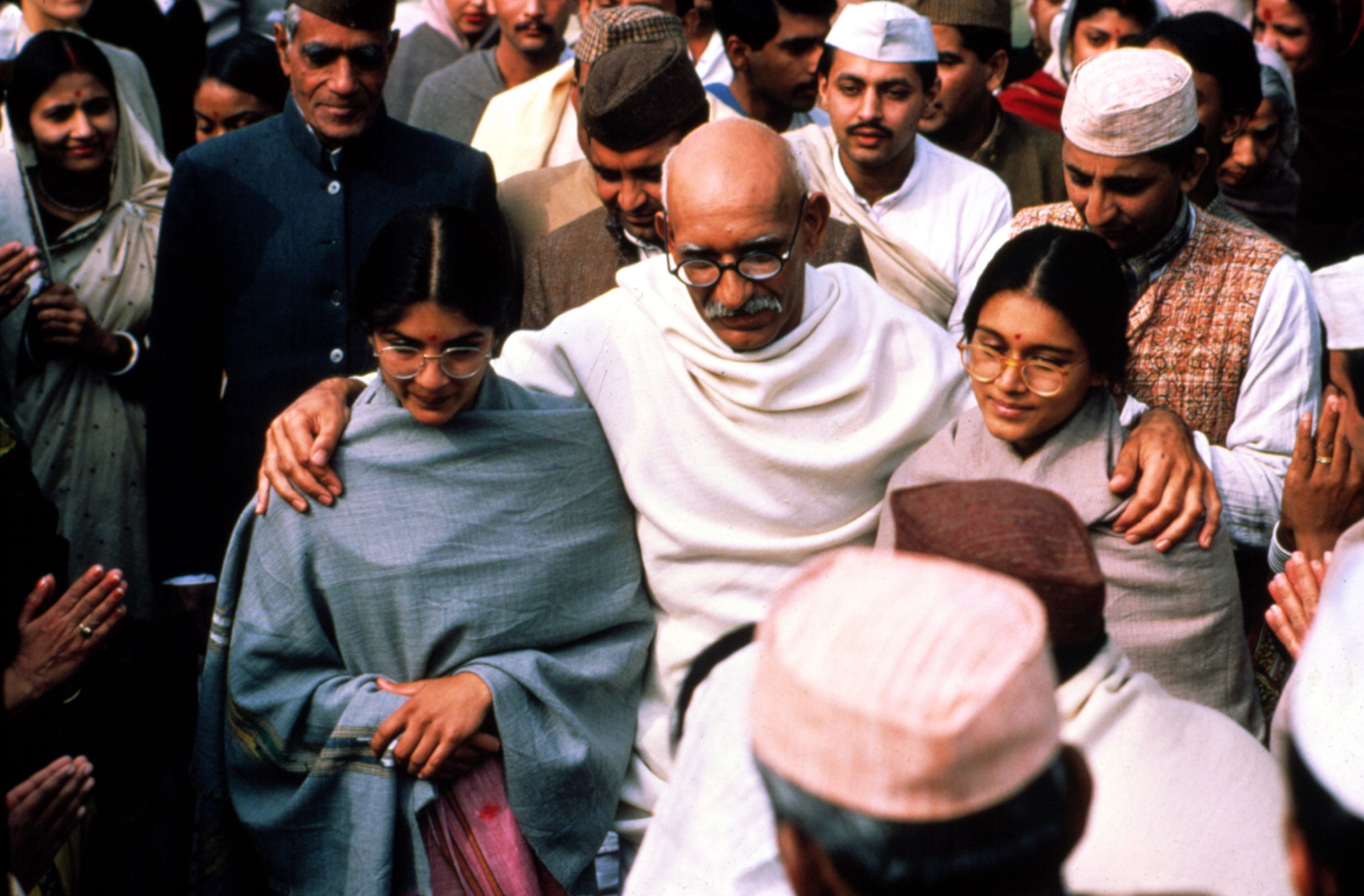
With an impressive collection of eight Academy Awards, including Best Picture and Best Director, Richard Attenborough’s “Gandhi” is a cinematic tour de force that has earned its place in the annals of great filmmaking. The film presents the inspiring life story of Mahatma Gandhi, the leader of the Indian independence movement against British rule, in a manner that is both intimate and filled with grandeur.
It’s a movie that does not simply recount historical events, but paints a vivid, moving picture of the man who was at the heart of these momentous events. Told with a blend of personal intimacy and sweeping grandeur, “Gandhi” is a masterfully crafted film that transports viewers back in time to witness the extraordinary journey of a seemingly ordinary man.
Starting with Gandhi as a young lawyer in South Africa, the film traces his evolution from a person grappling with racial discrimination to a leader who would challenge the mighty British Empire. We see him adopt his philosophy of non-violence, and how he uses this potent tool not just for his personal struggle but as a rallying point for a nation yearning for freedom.
The film’s grandeur is not just in the spectacular scale of the historical events it portrays, but also in the profound ideals it explores. Through the life of Gandhi, the movie delves into timeless themes of justice, freedom, and the power of the human spirit. It presents Gandhi’s principles of truth and non-violence not as mere ideas, but as living, breathing forces that could move millions and shape the course of history.
This exploration of grand ideas is what lends the film its enduring relevance and emotional depth.
Yet, amidst this grandeur, Attenborough ensures that the film never loses its personal touch. He offers an intimate portrait of Gandhi, revealing the man behind the public figure. We see his struggles, his doubts, and his moments of personal victory. We witness his determination, his unwavering faith in his principles, and the personal sacrifices he makes in pursuit of his vision. By letting us into Gandhi’s inner world, the film allows us to connect with him on a deeply human level.
The story of Mahatma Gandhi, as told by Richard Attenborough, is not just a tale of one man’s fight against an empire. It is a story of how a lawyer, armed with nothing more than his conviction and a powerful idea, could become an emblem of non-violence and a beacon of hope for people around the world. It is a story of personal courage, collective resistance, and the transformative power of peaceful protest.
This blending of intimate storytelling with historical grandeur is what makes the film an unforgettable viewing experience.
7. Nixon (1995) – 3 hours 12 minutes
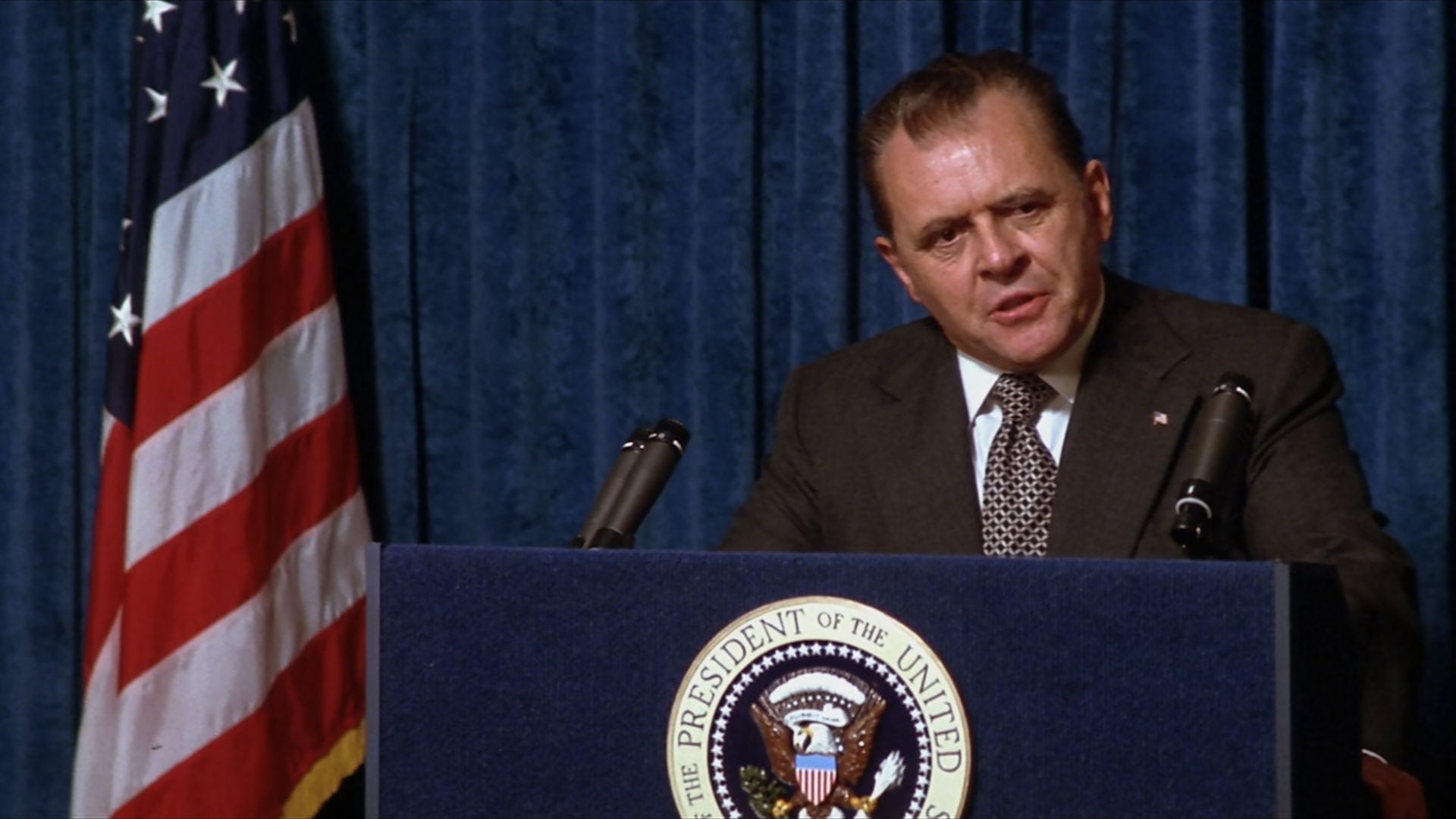
When it comes to exploring the lives of historical figures through the medium of film, few directors do it with as much depth and nuance as Oliver Stone. With his film “Nixon,” Stone provides audiences with a compelling look at the life of Richard Nixon, the 37th President of the United States. This isn’t just another political drama focused on the infamous Watergate scandal.
Instead, Stone gives us a multifaceted portrait of Nixon, presenting a picture of one of America’s most contentious leaders that is as complex as it is fascinating.
The word ‘contentious’ is often used when discussing Nixon’s presidency, and for good reason. His term in office was marked by significant controversy, the most famous of which was the Watergate scandal, a political event that continues to resonate in the annals of American history. Yet Stone’s film goes beyond this well-known event, delving deeper into the life and personality of Nixon.
“Nixon” is not just a political drama but a psychological exploration of a man who was as much shaped by his personal experiences as he was by the political climate of his time. Stone guides the audience through Nixon’s humble beginnings, his relentless pursuit of power, and the personal and political struggles that marked his presidency. We get to see Nixon’s ambitious drive, his sometimes-paranoid disposition, and his desperate attempts to maintain control amidst the tumultuous events of his presidency.
But Stone’s portrayal does not stop at showing us Nixon’s struggles. We also get glimpses of Nixon’s human side – his moments of vulnerability, his love for his family, and his attempts to balance his personal life with his role as president. These personal aspects are woven seamlessly into the narrative, adding depth to the character and making him relatable to the audience. This combination of political drama and personal insight paints a picture of Nixon that is far more complex than the standard narrative.
What makes “Nixon” stand out is Stone’s refusal to reduce the man to a one-dimensional figure. He acknowledges Nixon’s failings but also highlights his achievements, presenting a balanced portrayal that encourages viewers to form their own opinions. Nixon is shown as a man who had great potential but was ultimately undone by his inner demons and the immense pressures of his office.
This multifaceted portrait of one of America’s most contentious leaders serves as a fascinating study of political power and personal frailty, making “Nixon” a must-watch for anyone interested in understanding the complex nature of leadership.
6. The Right Stuff (1983) – 3 hours 13 minutes
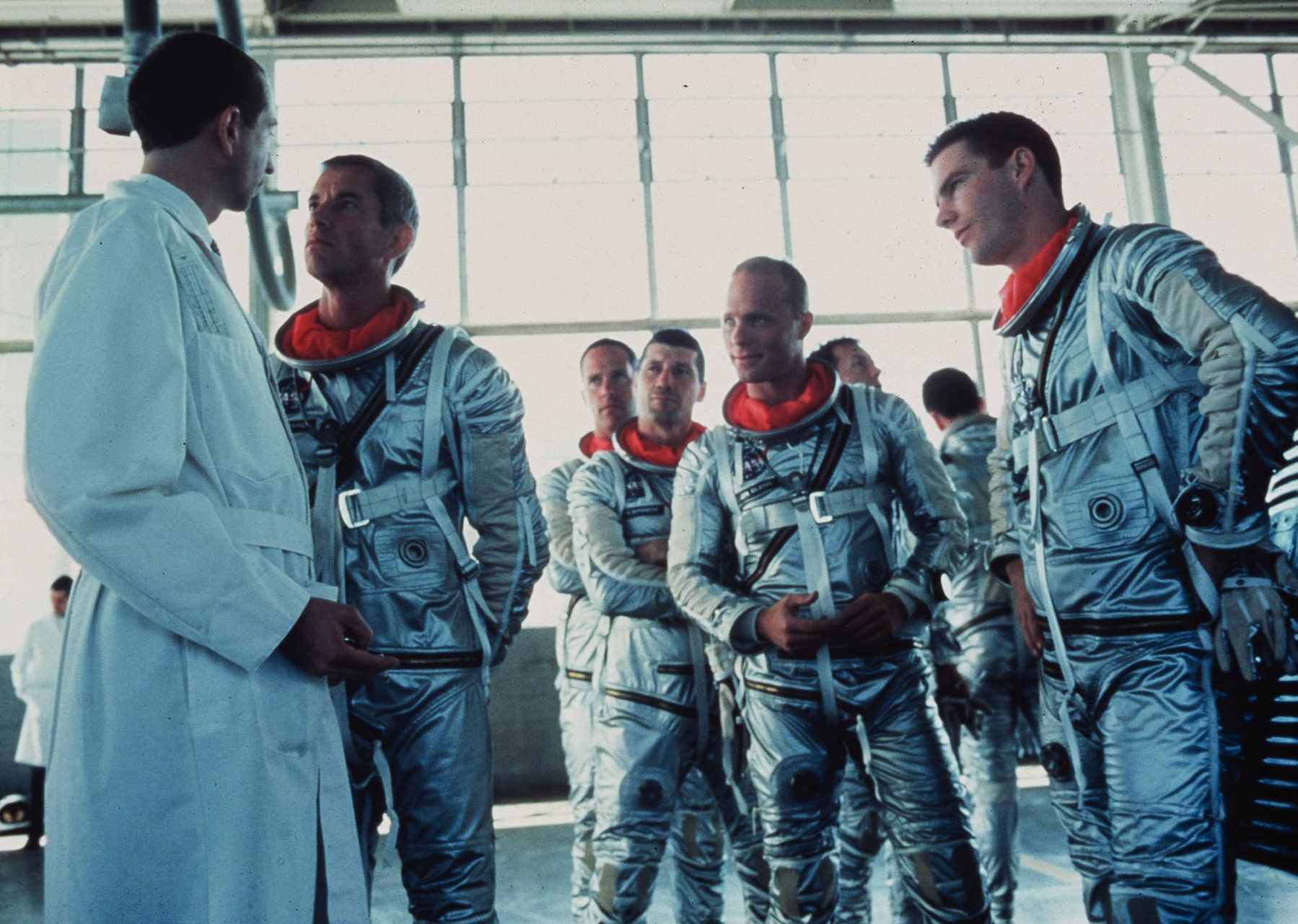
When it comes to film directors who are skilled at telling complex, wide-ranging stories, Philip Kaufman’s name certainly springs to mind. Kaufman has a knack for weaving together intricate narratives and creating detailed portraits of characters and events. This ability is on full display in his masterful retelling of the birth of the United States’ space program. It’s a tale as vast as space itself, brimming with vibrant events and compelling characters, and Kaufman leaves no stone unturned in his exploration of this fascinating chapter of history.
Kaufman’s film doesn’t just recount the events leading up to the launching of the first manned space mission by the United States. Instead, it paints a rich, mesmerizing tapestry that vividly brings to life this thrilling period. The movie covers a lot of ground, from the initial plans and aspirations to the intense training of the astronauts, all the way to the final, nail-biting countdown to liftoff.
Each scene is meticulously crafted, with every detail given careful attention. This deep dive into the minutiae of the space program gives viewers an immersive, behind-the-scenes look at the enormous effort and resources that went into making these historic missions possible.
But what truly sets Kaufman’s film apart is the way it brings together a wide array of characters. From the engineers and scientists who worked tirelessly behind the scenes, to the brave astronauts who risked their lives to venture into the unknown, to the politicians and military officials who had to balance ambition with pragmatism, the film presents a broad spectrum of individuals who each played a vital role in this monumental endeavor.
These characters are not mere background figures. They are fully fleshed-out individuals with their own dreams, fears, and motivations. Kaufman masterfully interweaves their personal stories with the larger narrative of the space program, creating a multi-layered tale that is as much about human aspiration and resilience as it is about scientific achievement.
While the scope of the film is vast, Kaufman never compromises on detail. Every aspect of the space program, from the intricacies of rocket design to the physical and psychological toll of space travel, is explored with remarkable precision. The film doesn’t shy away from depicting the setbacks and failures, the moments of fear and doubt, or the toll that the mission took on the astronauts and their families. These details lend an authenticity to the narrative that makes the eventual successes all the more exhilarating.
Kaufman enables us to experience the palpable excitement of those early days, the nerves and tension of the countdown to launch, and the awe-inspiring spectacle of humans leaving Earth for the first time. He captures the sheer scale and significance of the endeavor, while never losing sight of the human element at its heart.
5. Malcolm X (1992) – 3 hours 22 minutes
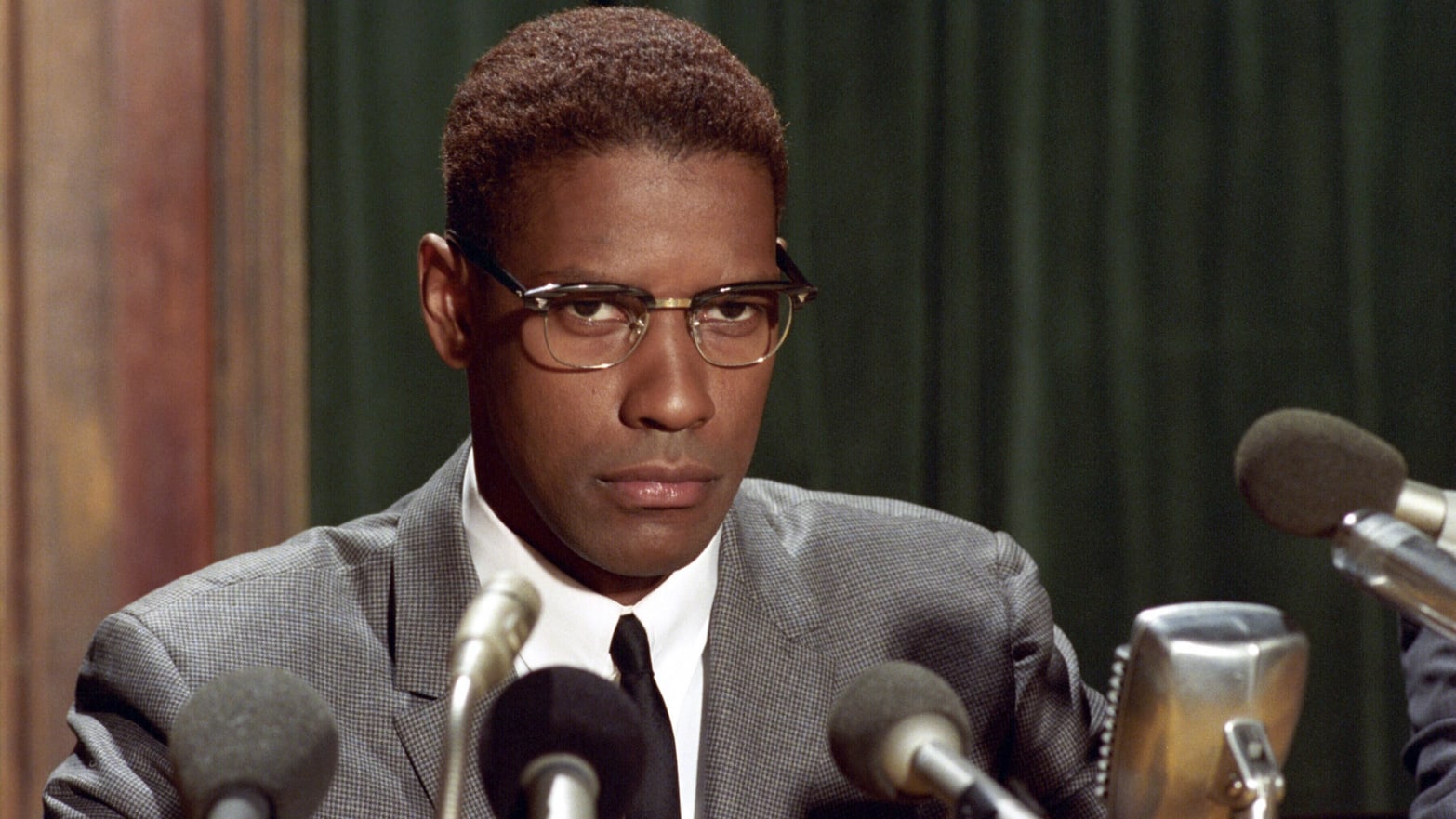
When it comes to directing films that touch on the intricate matters of race, identity, and society, there are few who can match the prowess of Spike Lee. In his compelling biographical epic, Lee turns his insightful gaze towards the life of Black Nationalist leader Malcolm X, unfolding a narrative that is as engrossing as it is enlightening. This is not just a film about a man, but about a journey from darkness to enlightenment, from a life mired in crime to one that stands as a beacon of activism and hope.
Spike Lee is a director renowned for his astute storytelling, and his skill shines in this film. Under his direction, Malcolm X’s life unfolds before us like a rich tapestry, intricately woven with threads of struggle, triumph, heartbreak, and redemption.
The film delves into his early years, portraying his life of crime, the darkness that ensnared him, and the harsh realities he faced as a black man in a deeply divided society. These gritty details are crucial in understanding the experiences that shaped him and guided his path towards becoming a leader.
Yet, the story doesn’t just linger on Malcolm X’s past. The film’s beauty lies in its exploration of his transformation. Spike Lee doesn’t shy away from portraying the complexities of this journey. From the harsh confines of prison where Malcolm X first encountered the teachings of Elijah Muhammad, to his rise as a powerful voice in the Nation of Islam, and ultimately his evolution into a globally recognized figure of black pride and self-determination, Lee chronicles the life of Malcolm X with an intimate and honest perspective.
Central to this transformation is Malcolm X’s conversion to Islam. His spiritual journey, with Islam serving as a beacon of hope and redemption, is a central pillar of the film. It’s through his faith that Malcolm X finds his purpose, morphing from a criminal into a passionate advocate for black rights. This powerful depiction showcases the impact faith can have in shaping a person’s life, and how it can serve as a driving force for social change.
But this movie isn’t just about the life of one man. Spike Lee uses Malcolm X’s story to reflect on broader themes of race, inequality, and social justice. Through the lens of Malcolm X’s life, the film paints a vivid picture of the challenges faced by the African American community, and the relentless struggle for equality and dignity. Malcolm X’s powerful speeches, his fearless stance against oppression, and his unwavering determination to fight for his people make him a symbol of resistance and a source of inspiration.
In the end, the film isn’t just an exploration of Malcolm X’s life, but a study in transformation, a testament to the power of faith, and a commentary on race relations in America. Under Spike Lee’s astute direction, Malcolm X emerges not just as a historical figure, but as a beacon of activism, a voice for the marginalized, and a symbol of enduring strength.
Through its compelling narrative, engrossing performances, and nuanced direction, Spike Lee’s Malcolm X serves as a powerful reminder of our collective responsibility to stand against injustice and strive for a more equitable world.
4. The Irishman (2019) – 3 hours 30 minutes
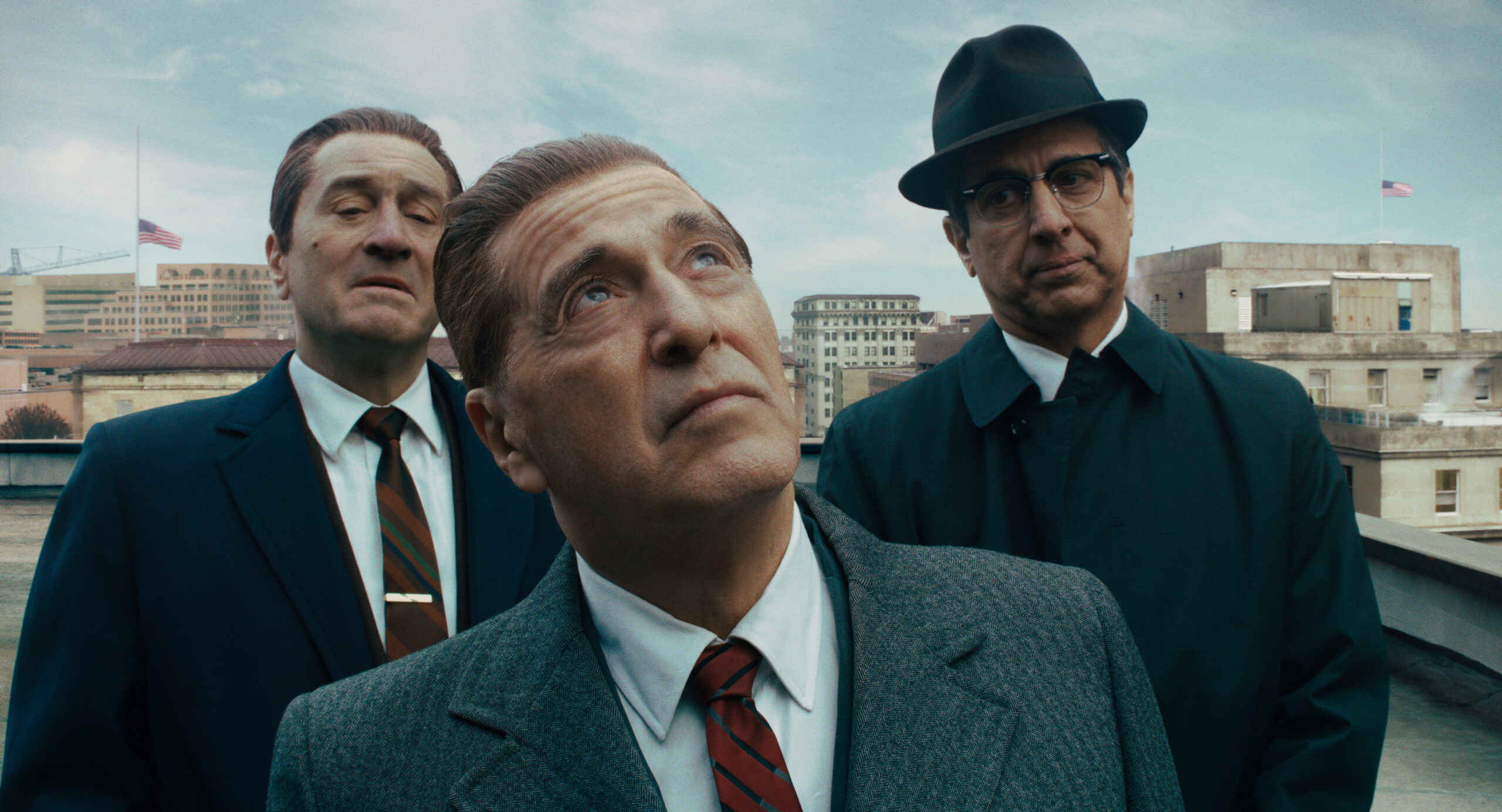
Martin Scorsese, one of the greatest filmmakers of our time, has a unique gift for telling stories that resonate with audiences long after the credits roll. Known for his keen eye for detail and a knack for unearthing the human elements in even the most hardened characters, Scorsese has once again turned his lens onto the world of gangsters.
This time, he takes us on a journey into the life of Frank Sheeran and his intricate ties with the criminal underworld. This labyrinthine plot is not just a thrilling narrative but a testament to Scorsese’s incredible storytelling prowess.
Scorsese is no stranger to the gangster genre. He has given us some of the most iconic movies in this field, from “Goodfellas” to “Casino”. Yet, in his latest exploration, Scorsese revisits the genre with a new perspective, crafting a narrative that is as much about introspection as it is about crime and power. Frank Sheeran, the film’s protagonist, is not merely a mobster but a man grappling with the choices he has made and the life he has lived.
The plot of the movie is labyrinthine, filled with twists and turns that keep the audience on the edge of their seats. As Scorsese unravels Sheeran’s story, he delves deep into the criminal underworld, revealing the complex web of alliances, rivalries, and power struggles that define it. Each character is layered, each relationship nuanced, and each scene brimming with tension.
Scorsese paints a vivid picture of a world where loyalty and betrayal coexist, where power is as elusive as it is enticing, and where the line between right and wrong is often blurred.
Yet, amidst the crime and violence, Scorsese’s film is also an introspective journey. As we follow Sheeran’s life from his early days as a truck driver to his rise in the mob hierarchy, we are invited to reflect on the choices he makes and the price he pays for them.
Scorsese is a master at exploring the human condition, and in this movie, he delves into the themes of guilt, regret, and the search for redemption. Through Sheeran’s eyes, we are led to question the true cost of power and the impact of our actions on our conscience.
What truly sets the film apart, however, is Scorsese’s mastery of the craft. From his meticulous attention to detail to his skilled direction of the actors, Scorsese crafts a cinematic experience that is both immersive and emotionally gripping. The cinematography is captivating, each frame carefully composed to tell a story. The performances are stellar, with the actors bringing depth and nuance to their roles.
And the pacing is masterfully handled, each scene building on the last to create a crescendo of tension and emotion.
It’s a testament to Scorsese’s prowess as a filmmaker and his ability to tell stories that resonate on a deeply human level. Whether you’re a fan of the genre or new to his work, this film is a compelling exploration of crime, power, and the human condition.
3. Lawrence of Arabia (1962) – 3 hours 42 minutes
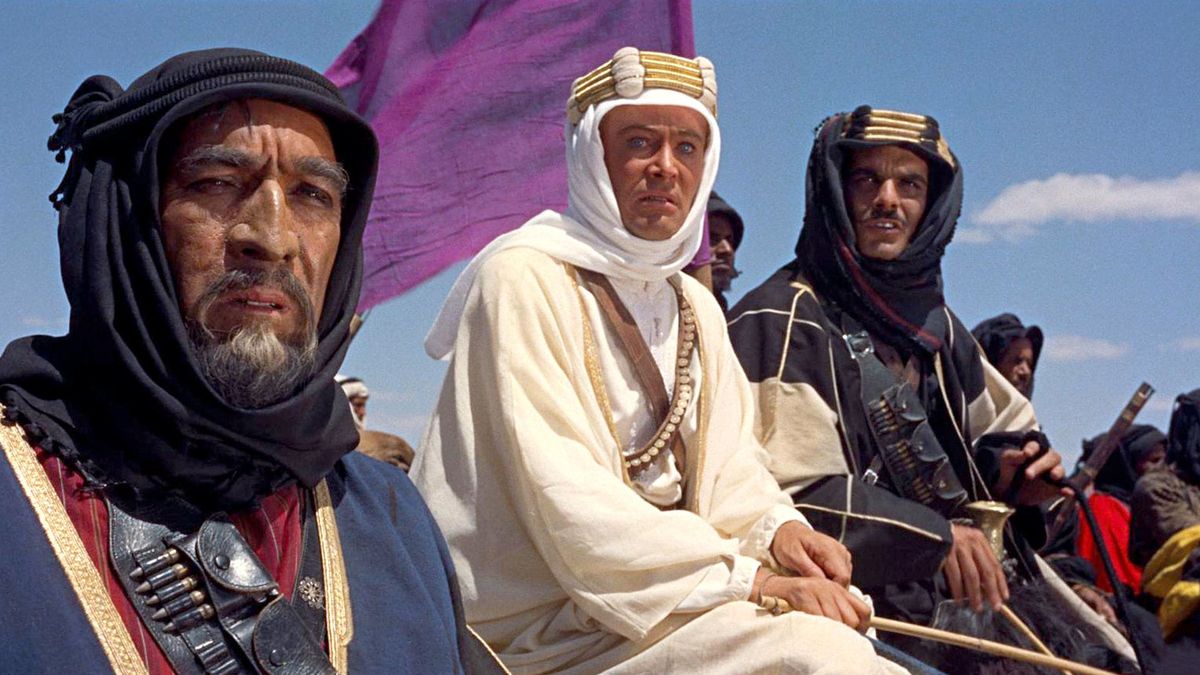
David Lean, an auteur known for his grand sweeping epics, truly created a masterpiece with his film about T.E. Lawrence. Titled “Lawrence of Arabia,” the film is more than just a visual spectacle. It’s an immersive experience that transports viewers into the heart of the Arabian desert and the tumultuous period of World War I. The film, with its striking cinematography and compelling storyline, is a quintessential watch for any lover of cinema, providing an expansive and detailed exploration of one man’s transformation amidst the backdrop of war.
From the moment the film begins, the viewers are thrust into the life of T.E. Lawrence, a British officer whose unconventional approach and understanding of the Arab culture lead him to play a significant role in the Arab Revolt against the Ottoman Turks during World War I.
But the film is more than just a war saga. Lean uses the war as a backdrop to delve into the complex character of Lawrence, exploring his strengths, flaws, and ultimately, his transformation from a British officer to a champion of the Arabian people. Through Lawrence’s journey, Lean skillfully portrays the drama of war, the politics of imperialism, and the cultural clashes that marked this period in history.
The allure of the desert is another crucial element of “Lawrence of Arabia.” The desert, with its vast expanses of sand and relentless heat, is not merely a location in the film. It’s a character in itself. Lean’s masterful direction and Freddie Young’s outstanding cinematography transform the desert into a bewitching and hostile entity that shapes Lawrence’s journey. The sweeping shots of the arid landscapes, the towering sand dunes, and the harsh desert sun serve to highlight the daunting challenges Lawrence faces and his extraordinary resilience.
Beyond the story and the visuals, the film also offers exceptional performances. Peter O’Toole’s portrayal of T.E. Lawrence is nothing short of phenomenal. O’Toole captures the charisma, the stubbornness, and the internal conflicts of Lawrence with remarkable authenticity, giving viewers a glimpse into the soul of this extraordinary man. The supporting cast, including Omar Sharif, Anthony Quinn, and Alec Guinness, also deliver memorable performances, enriching the narrative and the cinematic experience.
2. Dances With Wolves (Director’s Cut) (1990) – 3 hours 56 minutes
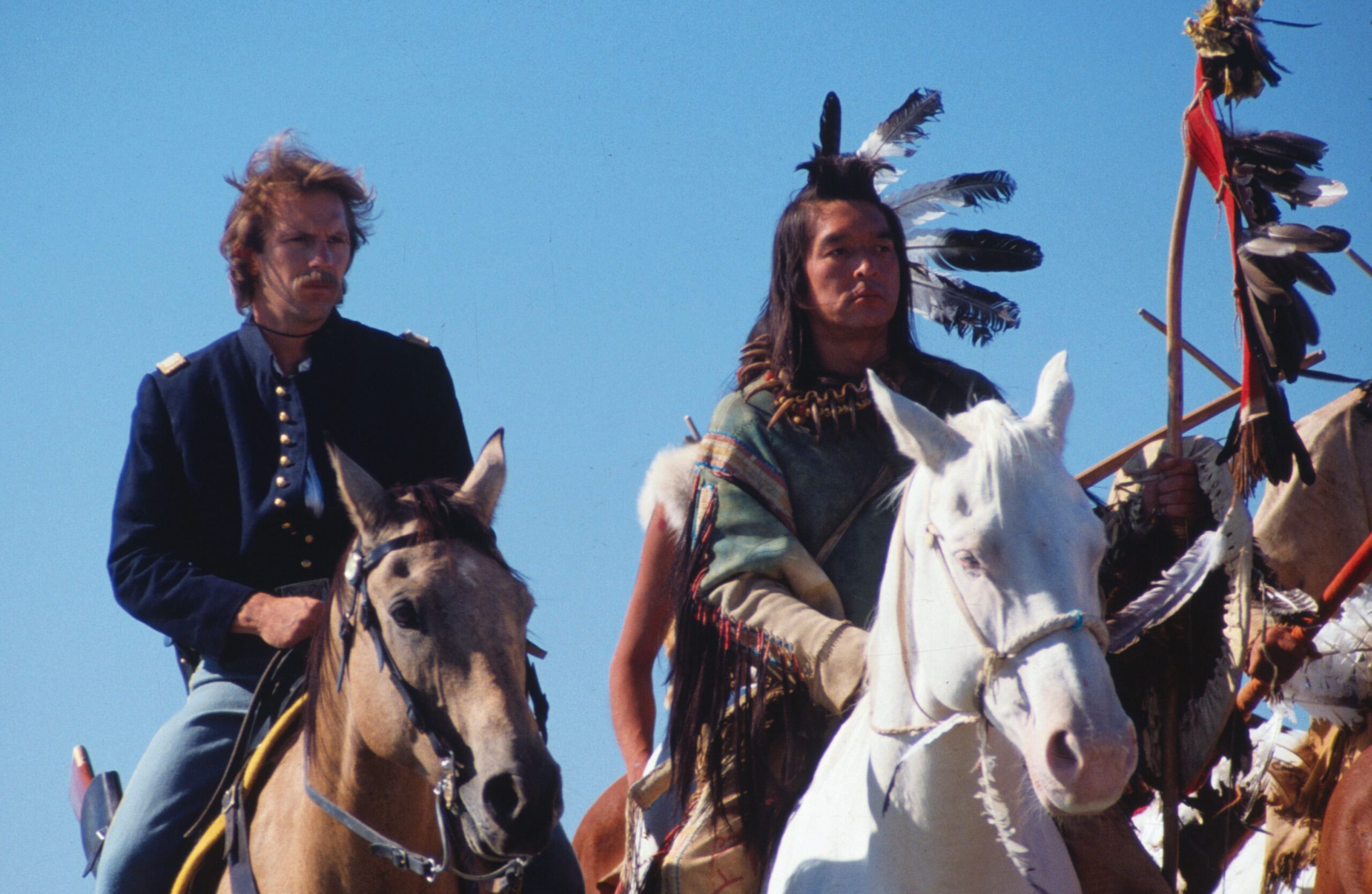
Kevin Costner made quite a splash with his directorial debut, “Dances with Wolves.” The film is a captivating tale set against the backdrop of the American Civil War. It is an immersive journey into the heart of the American frontier that offers viewers a deeply thoughtful and moving narrative. The film, with its grand scale and emotional depth, stands out as an enduring classic in cinema, particularly for its portrayal of a union officer, Lt. John Dunbar, and his experiences with a Sioux settlement. It is as profound a tale as it is a lengthy one, clocking in at over three hours, yet it manages to hold the audience’s interest throughout.
“Dances with Wolves” tells the story of Lt. John Dunbar, played by Costner himself, a Union Army officer who requests a posting on the Western frontier. Alone in the wilderness, Dunbar finds himself drawn towards the lifestyle and culture of a local Sioux tribe. The film explores Dunbar’s transformation as he becomes more integrated with the Sioux, eventually forming a deep bond with the community and adopting their way of life. His journey from an outsider to a valued member of the Sioux tribe is depicted with nuance and emotional depth, inviting viewers to ponder upon themes of identity, friendship, and cultural understanding.
What’s particularly striking about the film is its attention to detail. Costner takes the time to delve into the complexities of Sioux culture, allowing viewers to see it through Dunbar’s eyes. It’s a commendable approach that lends an authenticity to the film and enhances the overall narrative. The gradual shift in Dunbar’s perspective, his growing respect and love for the Sioux community, is communicated through his interactions with the tribe, their shared experiences, and his intimate moments of self-reflection.
The film is also notable for its stunning cinematography. From the sprawling landscapes of the American frontier to the intimate moments within the Sioux community, every frame of “Dances with Wolves” is a visual treat. The cinematography, paired with the evocative score, creates an atmosphere that immerses the audience in the world of the film, accentuating the raw beauty of the wilderness and the simplicity of life on the frontier. It’s a significant aspect of the film that contributes greatly to the overall viewing experience.
“Dances with Wolves” is indeed a mesmerizing tale that beautifully intertwines historical context with a personal journey of self-discovery. Despite its length, the film never loses its allure, largely due to the depth of its characters, the richness of its narrative, and the profound themes it explores. Costner’s portrayal of Dunbar is a standout performance, as he expertly conveys his character’s transformation and growing empathy towards the Sioux.
As a director, Costner demonstrates a flair for storytelling and a keen eye for detail, crafting a film that continues to resonate with audiences even decades after its release. His directorial debut is a testament to his talent, not only as an actor but also as a filmmaker, setting the stage for a promising career behind the camera.
1. Napoleon (1927) – 5 hours 30 minutes

Abel Gance’s epic biopic, “Napoleon,” is a masterpiece from the silent era that stands as a testament to the ambitious scale and groundbreaking techniques of early cinema. The film primarily focuses on the early life of Napoleon Bonaparte, one of history’s most influential figures. Yet, despite not encompassing his entire life, the film’s remarkable depth and attention to detail make it an extraordinary feat in cinematic history.
The film, clocking in at over five hours, takes audiences on a riveting journey through Napoleon’s formative years, tracing his life from childhood to his meteoric rise to power during the French Revolution. As the title character, Albert Dieudonné delivers a powerful performance that captures the complexity and ambition of the future French leader. The film masterfully depicts Napoleon’s formidable intellect, his tactical genius, and his passionate dedication to the cause of France. Although the narrative does not cover his entire life, it provides an insightful glimpse into the man behind the legend.
“Napoleon” is renowned for its innovative techniques and stunning visuals that were way ahead of their time. Gance employed groundbreaking methods of filmmaking, including rapid cutting, extensive close-ups, and the use of handheld cameras, which were a novelty at that time.
The film’s legendary triptych finale, where the screen expands to three times its usual size to present a panoramic view of a battlefield, remains one of the most famous sequences in film history. This daring use of technology reflects the film’s epic scope and Gance’s commitment to pushing the boundaries of what was possible in cinema.
The film is also notable for its intense and moving portrayal of the political and social turmoil of the French Revolution. Gance’s meticulous attention to historical accuracy is evident in the detailed recreations of significant events and in the portrayal of characters who shaped this period. It’s a grand narrative that showcases not just the life of Napoleon, but also the era that forged him.
From the turbulent streets of revolutionary Paris to the bloody battlefields of Italy, each scene is meticulously crafted to transport audiences back in time.
Despite its considerable length, “Napoleon” remains a gripping spectacle from start to finish. Its compelling narrative, combined with its pioneering cinematic techniques, make it an unforgettable viewing experience. Abel Gance’s ambition and vision shine throughout the film, which serves as a fitting tribute to a pivotal figure in history. His ability to humanize Napoleon, while also portraying the grandeur and tumult of his era, sets “Napoleon” apart from many other biopics. It stands as an enduring classic of the silent era, demonstrating the potential of cinema to bring history to life in captivating and innovative ways.
In an era where fleeting moments and instant gratification often rule our lives, where attention spans are constantly being challenged and reduced, these long-form biopics stand tall as monumental testaments to cinema’s enduring ability to engage, enthrall, and educate audiences over extended periods. They are not merely pieces of motion picture; they are immersive experiences, each minute lovingly crafted and deeply saturated with the essence of the protagonists they portray.
These narratives dive deep, meandering through every aspect of their subjects’ lives, encapsulating their triumphs, their failures, their fears, and their joys. These films serve as historical documents, time capsules that reveal layers of insights about our past and the individuals who helped shape it.
Every shot, every dialogue, every silent moment is a brushstroke in a meticulously painted canvas that unfolds over hours, inviting audiences to lose themselves in the richness of their narrative tapestry. They encapsulate the essence of storytelling, transforming viewers from mere spectators to active participants in the journey of the characters they portray.


